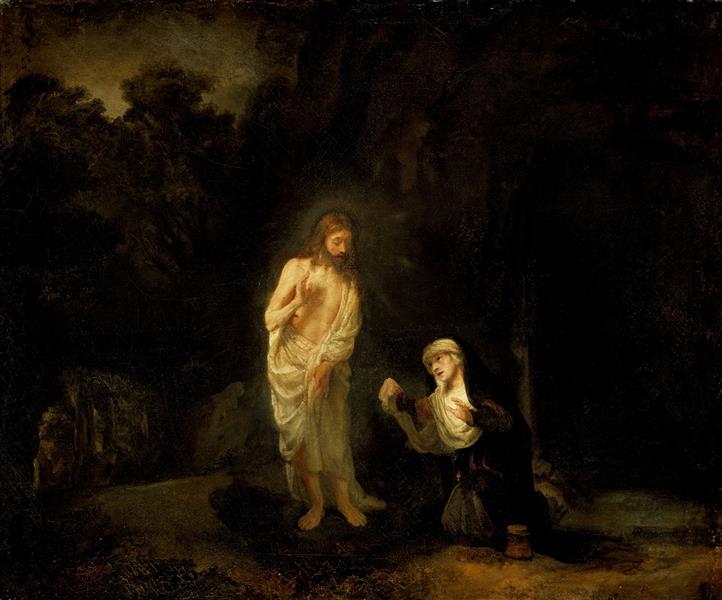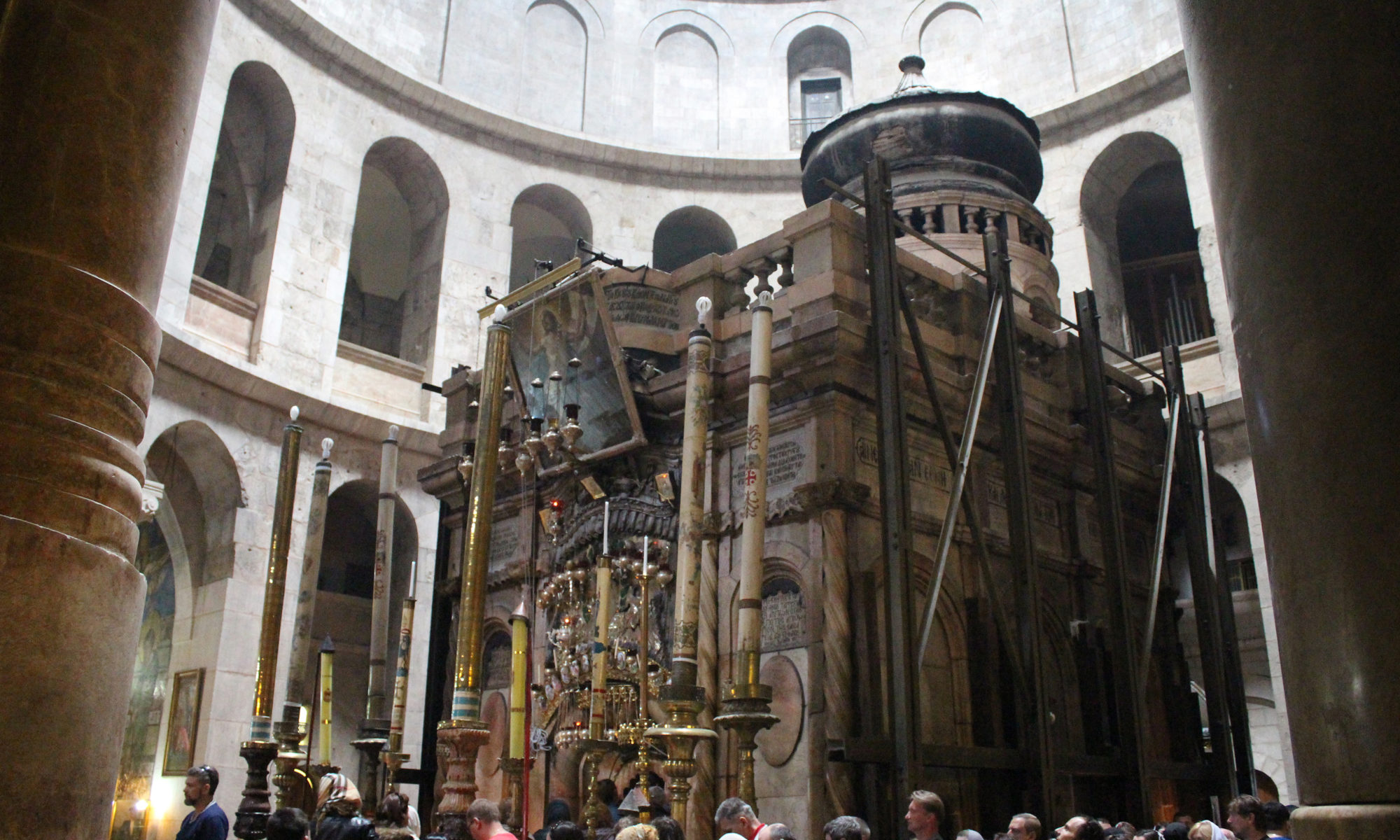Today, the place said to be the tomb of the resurrected Christ may be found in the Church of the Holy Sepulcher in Jerusalem. How did this church come to be?
The tomb of Christ where St. Helena made a pilgrimage.
The story goes that Helena, the mother of Emperor Constantine (Reign 25 July 306 – 22 May 337), went on a pilgrimage to Jerusalem, and asked the inhabitants of Jerusalem where Christ’s tomb was. They led her to a certain Roman temple of Venus, beneath which, according to a tradition that had been handed down through the centuries, lay the spot where Jesus had been buried. Because it was a pagan temple, neither the Christian nor Jewish inhabitants would enter it. Before the conversion of Emperor Constantine, Roman emperors were pagans, not Christians. It is likely that the Romans built a pagan temple over the tomb of Christ in order to prevent Christians from worshipping there. Hearing of this fact, Emperor Constantine ordered the pagan temple to be destroyed. Afterward, he caused a magnificent church to be built on the spot. A legend adds that Helena also found the remains of our Lord’s cross at that time.
Eusebius, the fourth-century church historian, wrote that Helena went on a pilgrimage to the Holy Land, and built churches at the places of Christ’s birth, his ascension, and his resurrection. Other than that, we cannot be sure what really happened. However, to this day, pilgrims from all over the world visit the Church of the Holy Sepulcher to venerate what they believe to be the tomb of Jesus, the place where he rose again from the dead.
Mary Magdalene, the first to see the resurrected Jesus

Rembrandt
Mary Magdalene was the first person to see the resurrected Jesus. Her encounter with the empty tomb and the risen Lord is described in the Gospel of John, chapter 20, vv. 1–18.
At the Easter Mass I attended, a priest spoke about faith, using the analogy of “Doubting” Thomas and Mary Magdalene. When the risen Jesus spoke to Mary, without hesitation she answered, “Rabboni” (Teacher). Thomas made it clear that he would not believe until he laid his hands on Jesus’ scars. The priest said that for modern people, Thomas’s reaction was easier to understand than Mary Magdalene’s.
I have always been impressed by the faith of Mary Magdalene. Although she did not even touch the risen Jesus, she had no doubt at all that he had bodily risen, and she immediately went to announce his resurrection to the rest of the disciples, as she had been told to do. I find myself tempted to want to know the scientific evidence for the resurrection, even though I know the Biblical story.
As I listened to the priest say, “Blessed are those who believe without seeing” (John 20: 29), I realized once again that I had been paying attention only to what I could see, in other words, the things of this world. I feel that I should pray more earnestly that I may become the kind of person who can believe in the unseen God, not only in the things that can be seen.
Easter Baptism
In my church, seven people were baptized on Easter. They ranged in age from young to old. They looked so happy and bright and shining. I think that Easter, symbolically, fits perfectly with baptism, and their baptism will be for them a memory that will last a lifetime.
When I was baptized, I felt as happy as they did. I felt as if I had been born anew, because my mind and body became lighter. Not only that, but the chronic feeling of depression and disappointment in life that I had been feeling was gone.
I don’t know the real reason, but think that before baptism, my soul was spiritually dead. I believe that through my baptism, I was brought back to life by the life of Christ. Even now, I sometimes feel depressed, but the feeling of total darkness in my heart that I used to feel has completely disappeared. I can be sad and yet still feel at peace with myself.
Regarding miracles, Rev. W. Wilmers, S.J., in his Handbook of the Christian Religion (Benzinger, 1891), writes as follows (p. 18): “If God can work miracles; if, as the Lord of the universe, He wishes to speak to us through miracles, He can also so dispose circumstances, and so influence our mind, that in many cases we may know with certainty that a miracle has taken place.” For me, the “resurrection” of my soul after baptism was that kind of miracle.

